1. Webinar Presenter
1.1. Brianne Moore, Business Anthropologist for SDL Social Intelligence Division is an experienced qualitative researcher with a unique skill set in social media analysis using traditional research methodologies.
2. Quotes
2.1. "Leverage social media technology to inform confident decision making"
2.2. "lay the foundation by asking the right questions you can establish a relevant social media set to evaluate"
2.3. "We use SDL SM2 for the initial drill down of the research, and then we go deeper into content analysis"
2.4. "Identifying 4 personas, we now have a more structured way to identify what we can do with this information."
2.5. "The approach seen here provides the rigor and appropriate amount of structure to ensure that decisions are well informed"
2.6. "Virtual Ethnography validates and confirms what you've done with your offline research"
2.7. "Quantifying conversations and identifying influencer value will help determine which groups to focus campaign strategy"
2.8. "Thanks to everybody who attended our #webinar. We'll have the recording up within the next 48 hours. Any questions?
3. Key Challenges with Social Media Data
3.1. Determining what is important in social media data
3.2. Getting to what is important in Social Media
3.3. Measruing what is important in Social Media
3.4. Connecting online research to understanding offline behavior
3.5. Making business decisions with social data
4. Virtual Ethnography
4.1. "Virtual ethnography is, ultimately, an adaptive ethnography which sets out to suit itself to the conditions in which it finds itself." Christine Hine, 2007
4.2. Ethnography of a virtual space (1 website or more)
4.3. Ethnography of a group of people (across many websites)
4.4. Ethnography of a topic (across internet and can include many groups)
5. SDL
5.1. SDL's Mission
5.1.1. We enable global businesses to engage with their customers
5.1.1.1. In the language, the media and at the moment they choose
5.1.2. We help businesses manage their brands and drive global revenues
5.1.2.1. Providing enterprise-ready innovative solutions for managing the end-to-end customer experience
5.2. SDL's Vision
5.2.1. SDL believes everyone should be able to engage with the information they require in the way they want
5.3. Website
5.3.1. www.SDL.com/SocialMedia
5.4. Twitter
5.4.1. @SDLsocial
6. Webinar Objectives
6.1. How to address changes in market perception that affect your brand by learning about the target groups affected and identifying new audiences, in this case, a large acquisition
6.2. How to leverage robust social media technology to address critical business questions
6.3. How to drive an engagement strategy with a thorough understating of your audiences’ online and offline behavior
6.4. How replicable methodologies remove bias from your social analysis to inform confident decision making
7. CASE STUDY: Burts Bees
7.1. Key Business Questions
7.1.1. How can Burt's Bees mitigate any issues with the brand due to the Clorox acquisition?
7.1.2. How stable are the current target audiences who value Burt's bees?
7.1.3. Are there new audiences that Burt's Bees can target?
7.2. Key Research Questions
7.2.1. Who i stalking about Burt's bees?
7.2.2. What are the key themes behind conversations?
7.2.3. Where do unique groups communicate?
7.2.3.1. What are the conversation triggers that can help to address key messaging concerns for unique audiences?
7.3. Research Process
7.3.1. Evaluate the brand's daily volume trends to get a high level understanding of what motivates conversations
7.3.2. Break conversations into product categories
7.3.2.1. Are there multiple audiences that exist within one topic?
7.3.3. Identify the Who and Where of conversation
7.3.3.1. Mommy Forums, Environmentalists
7.3.4. Audience Analysis and applying the methodology to Drive action
7.3.4.1. Themes
7.3.4.1.1. Environmental friendliness, Brand loyalty, Beauty enhancement and Parenting are going to shape the 4 personnas around which we can segment conversations and therefore marketing activity
7.3.5. Personas
7.3.5.1. 'Addicts'
7.3.5.1.1. Power users of product, Brand advocates, Sarcastic and Silly, Avid Twitter users.
7.3.5.2. 'Greenies'
7.3.5.2.1. Drawn to products based on eco-friendly, natural properties. Opinionated, Aggresive Forum users
7.3.5.3. 'Vanity Fairs'
7.3.5.3.1. Appreciate the benefits of beauty enhancements, Vocal about product quality (or lack thereof), Active on product review sites
7.3.5.4. 'Anxious Moms'
7.3.5.4.1. Prioritise Burt's Bees for their children over themselves. Sceptical about product labels, Aggressive forum users for advice
7.4. Brand Learnings & Recommendations
7.4.1. Personas
7.4.1.1. 'Addicts'
7.4.1.1.1. Providing online experiences for addicts to engage (with one another and others) will quickly leverage their existing influence
7.4.1.2. 'Greenies'
7.4.1.2.1. A PR campaign around Burt's Bees 2020 goals to address their concerns, particularly related to packaging and the Clorox brand would alleviate existing pain points
7.4.1.3. 'Vanity Fairs'
7.4.1.3.1. By evaluating "beauty" branding to cater to Vanity Fair audience, and advertising through relevant channels, this audeince will be sure to recognize and gravitate toward the products in the line created for consumers like them.
7.4.1.4. 'Anxious Moms'
7.4.1.4.1. Ensure clear messaging of "Baby bee" to moms to increase overall awareness, possibly via the key forums they actively engage on.
8. NEXT SDL SOCIAL INTELLIGENCE WEBINAR
8.1. Beyond the Buzz: Social Media Data Insights from the Olypmics
8.1.1. US Webinar August 21st 10:30 AM – 11:30 AM PDT
8.1.2. UK/Europe Webinar August 21st 11:00 AM- 12:00 PM GMT
